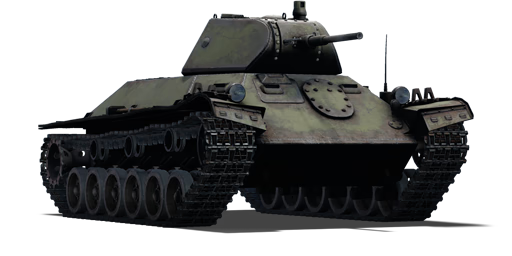



The T-126 was a Soviet prototype tank, which was further developed and resulted in the T-50 light tank. Unlike the T-50, the hull has a slightly different shape and thicker armour with 55 mm thick armour at the front, 45 mm thick sides and less armoured 30 mm thick back compared to 45 mm all around found on the T-50. The turret of T-126 is also missing the commander cupola found on the production T-50 as well as features a different shape and thicker 45 mm all-around armour compared to the 40 mm thick front and sides as well as the 15 mm thick back of the T-50s turret. Two T-126 prototypes were built.
The T-126 was introduced in Update 1.47 "Big Guns" as a GE premium. A premium version of the T-50, it shares its similarities due to its prototype design but is better due to a much thicker all-around armour. An unfortunate side effect results in a decrease in top overall speed due to the weight of added armour, although the vehicle is still quite mobile.
| Ammunition | Type | Armor penetration (mm) at a distance: | |||||
|---|---|---|---|---|---|---|---|
| 10 m | 100 m | 500 m | 1000 m | 1500 m | 2000 m | ||
| APHEBC | 70 | 67 | 58 | 47 | 39 | 32 | |
| APBC | 73 | 70 | 60 | 50 | 41 | 34 | |
| APCR | 94 | 87 | 64 | 43 | 29 | 20 | |
| Belt | Belt filling | Armor penetration (mm) at a distance: | |||||
|---|---|---|---|---|---|---|---|
| 10 m | 100 m | 500 m | 1000 m | 1500 m | 2000 m | ||
| AP-I/API-T | 13 | 12 | 7 | 3 | 2 | 0 | |







 2 x (40 / 45 / 70) %
2 x (40 / 45 / 70) % 
 2 x 118 %
2 x 118 % 

Mobility | |
|---|---|
Protection |
|---|
Firepower | ||
|---|---|---|